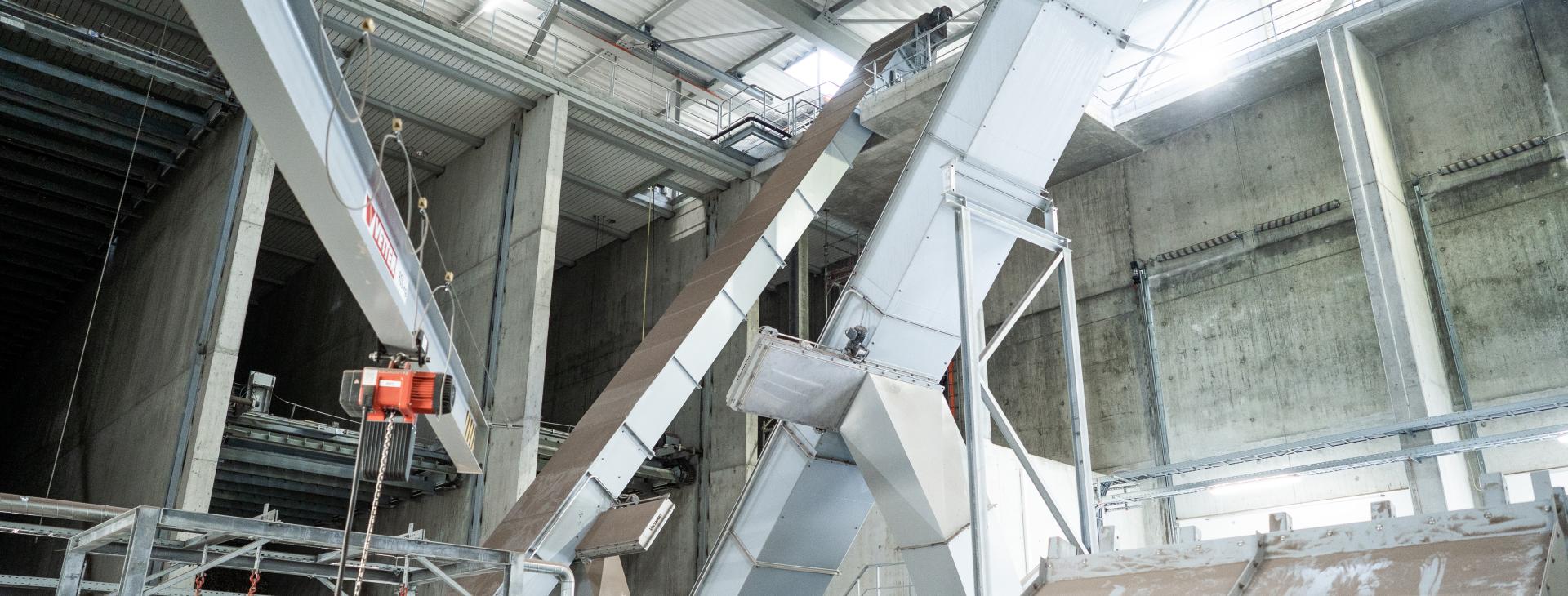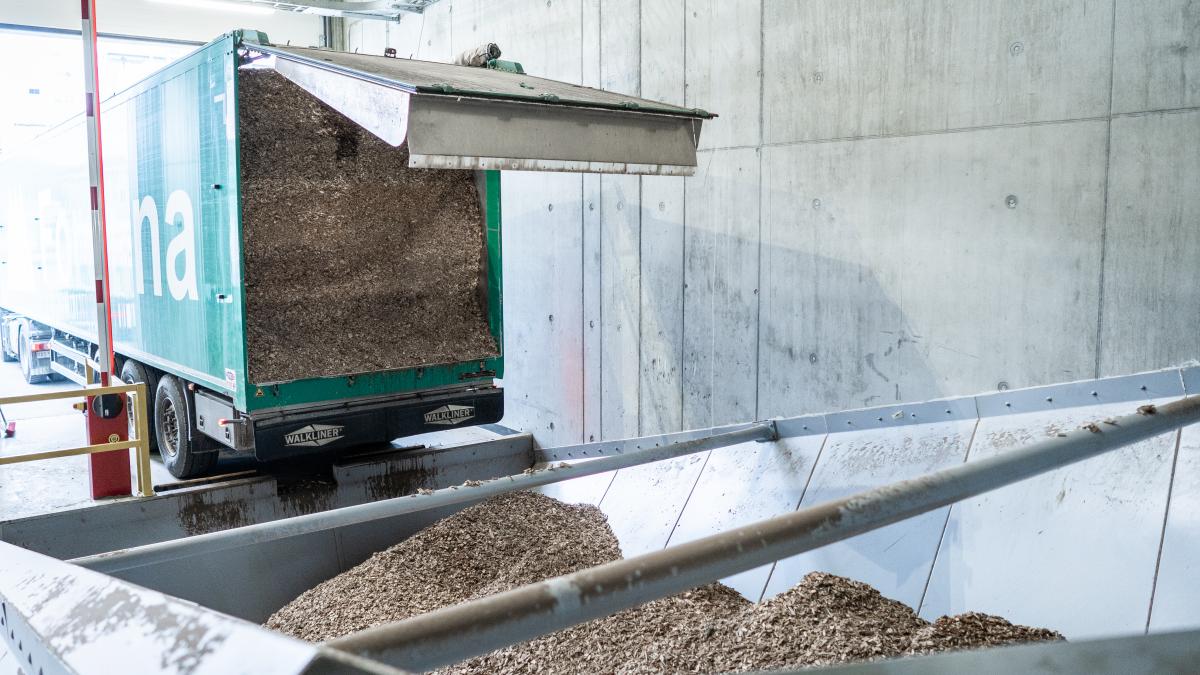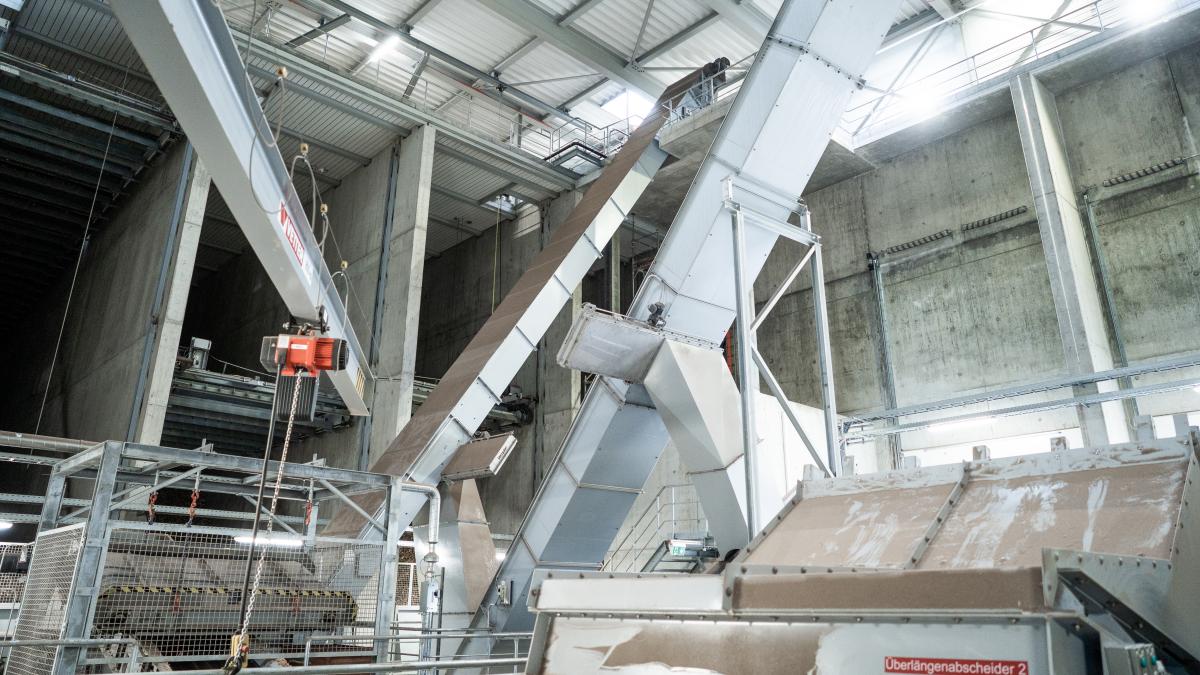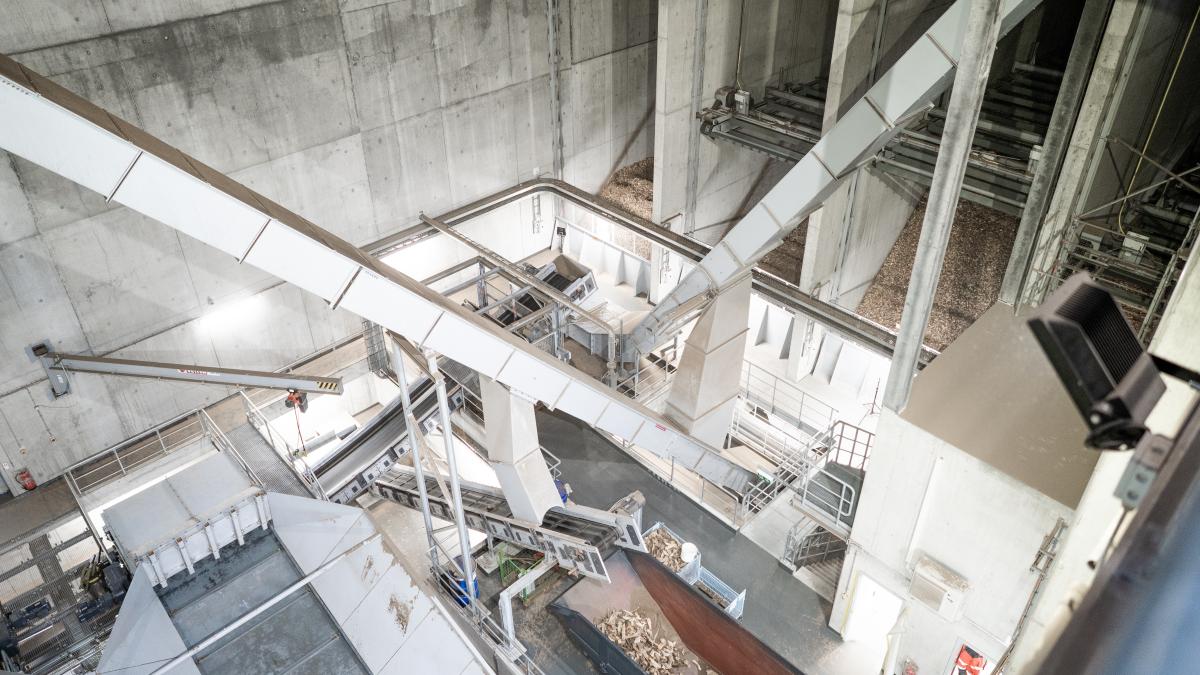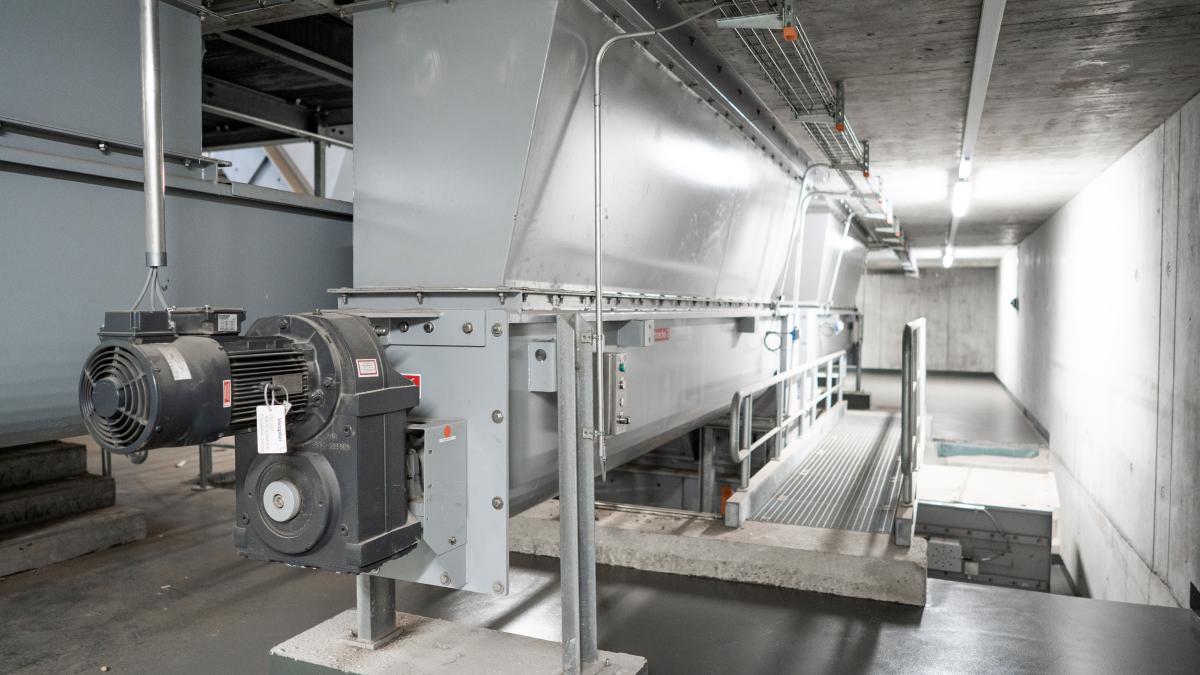Renewable biomass instead of fossil fuels? Energy production with wood is CO2-neutral in the long term, because in contrast to oil, gas and coal, the carbon dioxide released when wood, pellets or wood chips are burned is reabsorbed by the renewable forest. With the aim of massively reducing CO2 emissions, one of Switzerland’s largest wood-fired CHP (combined heat and power) plants was built in the Sisslerfeld industrial estate in Sisseln. The project was developed and implemented by vitamin manufacturer DSM Nutritional Products, Caliqua AG, one of Switzerland’s leading suppliers of thermal plants for industry and municipal service providers, and by ewz, the electric power supplier for the city of Zurich. The new wood-fired CHP plant replaces a DSM CHP plant, which the vitamin manufacturer operated with natural gas and heating oil.
The new plant will produce around 48 gigawatt-hours of electricity per year and supply around 17,500 households with electricity. 221 gigawatt-hours of steam will also be produced for district heating for the three project-implementing companies and other customers. The required fuel consists of wood chips fresh from the forest, delivered by suppliers within a maximum radius of 100 kilometres – yet another measure to protect the climate.
Acceptance, storage and dosing
The project partners rely on the technology of Vecoplan AG to receive the bulk material from the trucks, store it and feed it into the fuel furnace in metered quantities. Based in Bad Marienberg in Westerwald, Germany, the company develops and manufactures machines and plants for the resource and recycling industry. “Our tasks encompass services like planning, consulting, integrated project management, comprehensive service, installation, commissioning and maintenance,” explains Michael Müller, project manager at Vecoplan, the recycling specialist company which supplied all of the machinery. Vecoplan experts carried out the mechanical assembly of the individual units, installed the electrical control systems and commissioned the entire plant.
“There were several challenges involved in this project,” says Müller. For example, the engineers had to create a storage facility with a sufficiently large volume for the supplied fuel, enabling the boiler to be supplied around the clock. The various conveyor components also had to be precisely matched to each other and to achieve this, the technicians modified the original crane concept, for example, and developed a variant with loading and unloading conveyors.
A safe and reliable process
Trucks deliver the biomass to the plant’s reception area. The unloading process only takes 15 minutes, during which the bulk material is deposited onto two Vecoplan drag chain dischargers. These devices move it to the discharge side, dose it and transfer it to the next stage, the conveyor system. The conveyor system then transports the biomass into four storage boxes, en route to which an over-the-belt magnet frees the fuel from metal objects like screws and nails and a disc screen removes pieces of wood that are too long. These excess lengths are transported to a container. Vecoplan also installed two stations at which samples of the processed material can be taken.
The loading and unloading conveyors in the four loading boxes consist of distribution and discharge conveyor belts, which can be moved up and down on steel wire ropes via rope deflectors by means of a lifting device. Dosing screws gradually feed the fuel onto the conveyor system, which then transports it into the feed hopper of the furnace. From there, the boiler is continuously fed with fuel by discharge screws. “We dimensioned all the components of the processing line to match acceptance cycles and fuel requirements,” emphasises Michael Mützel of Vecoplan Sales. “By individually combining high-quality components, we have ensured efficient and safe operation in the plant.”
Vecoplan also impressed the plant operators with the rapid implementation of the project – Vecoplan received the order in Bad Marienberg in July 2017 and assembled the plant between February and June 2018. The first material was delivered at the beginning of October and the plant went into operation at the end of November.
Convincing results
With an overall efficiency of 86 percent, the wood-fired CHP plant in Sisseln exceeds the requirements of a main VUE (Association for Environmentally Friendly Energy) condition for “Naturemade-Star Certification”. This Swiss seal of approval is used to certify installations that generate energy in an environmentally-friendly manner. The plant operators can now look forward to a climate-friendly future, because every cubic metre of wood that replaces fossil fuels prevents the release of 600 kilogrammes of carbon dioxide into the environment. In Sisslerfeld this amounts to around 35,000 tons of CO2 per year, which equates with the use of roughly 58,000 cubic metres of wood over the same period. The wood ash resulting from the incineration is disposed of in landfills in accordance with the law.
The project partners are very satisfied with the new plant: “The highest priority for us was to ensure that the specific requirements were met and that the system had a very high level of availability with low power consumption,” says Roland Dietler, Project Manager at Caliqua AG. “And that’s what we have been able to achieve.”
